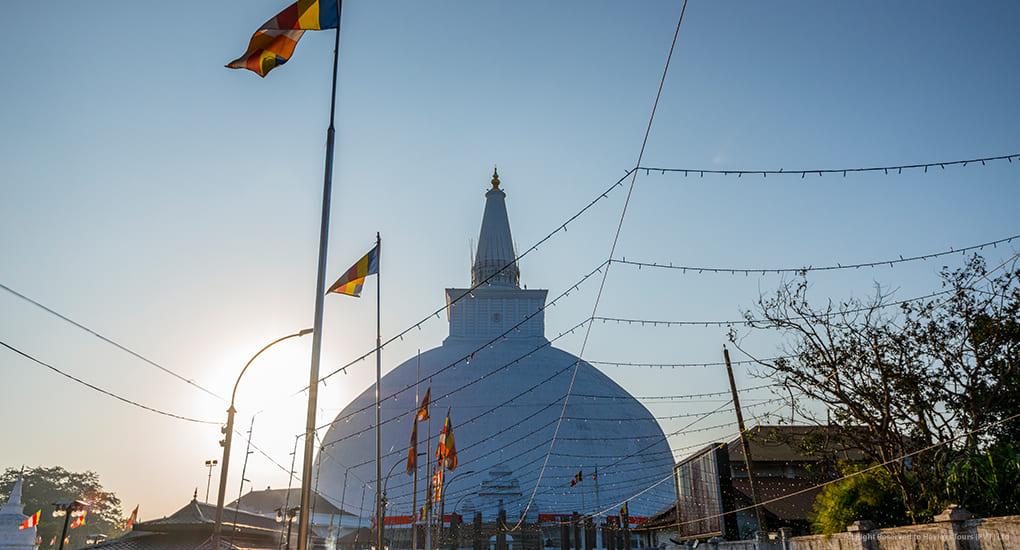Points of Interest - Anuradhapura
Ruwanwelisaya Stupa
Considered to be an icon of architectural glory in ancient Sri Lanka, Ruwanwelisaya is one of the world’s tallest monuments, standing at 103 m (338 ft.) and with a circumference of 290 m (951 ft.) And also holds a place as one of the Solosmasthana (the 16 sacred sites of veneration) and the Atamasthana (the eight sacred sites in the ancient sacred city of Anuradhapura), which are places believed to have been visited by Buddha during his three visits to Sri Lanka.
Ruwanwelisaya is known by many names such as, Mahathupa, Ran Welisaya, Swarnamali Chethiya & Rathnamali Dagoba.
Built by King Dutugamunu c. 140 B.C, the Stupa was uncovered on an archaeological expedition and was in ruins until Buddhist monks launched a fundraising by a Sinhalese Bikkhu and brought it to the glorious state centuries ago and final crowning was held on 17th June 1940 by The Ruwanveli Seya Restoration Society.
King Dutugamunu, passed away when the great stupa was only partially completed, leaving the responsibility of concluding it to his brother king Saddatissa. Under his patronage, the Mahathupa was given a chathra or a parasol, which isn't discovered today and a mass of tuskers around Mahathupa, which is found even today. As indicated by the Mahavansa, the chathra contained a circle of precious diamond stones, clarified as a Vajrachumbaka, and an enormous ruby at the top.
The Ruwanwelisaya was also designed with Buddha’s teachings in mind. Different parts of the dorm signifies different facts such as, dome signifies the vastness of the doctrine, the four facets above it represent the Four Noble Truths, the concentric rings indicate the Noble Eightfold Middle Path, and the large crystal at the pinnacle represents the ultimate Buddhist goal of enlightenment.
